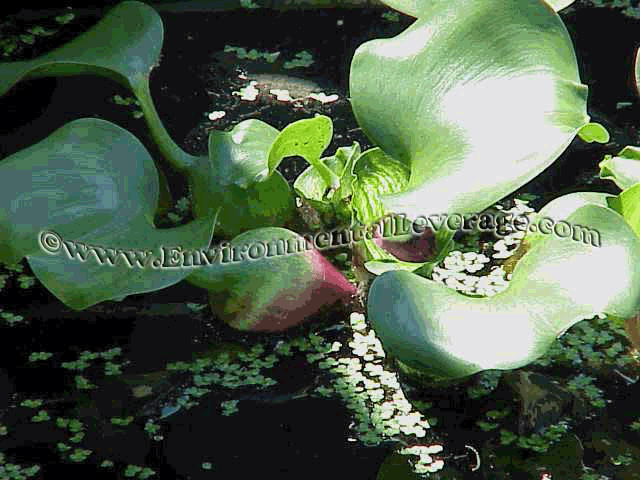Biological Products:
Bioaugmentation products for Wastewater applications in Papermills, Refineries, Chemical, Tanneries, Municipalities, Textiles, Steel, Agriculture, Animal feedlot, Gun Powder plant, Food and Beverage- Dairy Products, Orange Juice factory, Wineries, Cookie factory, Vegetable processing plant, Meat packing, Barbecue Restaurant, Aquaculture, Ornamental Ponds with algae , CAFO, Nursing homes, Military, Campgrounds, Universities, Regulatory agencies, River and Lake remediation
Lab Services:
Filamentous Identification Lab Service. One reason to identify filaments is to determine the filaments characteristics and then determine the type present. If the type is found out, a root cause can usually be associated with a particular filament. If the cause is known, then a correction can be made to alleviate problems. Chlorination is only a quick fix. Without process changes, filaments will grow back after chlorination. Wastewater Biomass Analyses and Cooling Tower Analyses also available
Training Materials:
Training is an integral part of any job. Not everyone is at the same level of training. Many people want beginning concepts and basics. Some need technical information or troubleshooting. Some want equipment, technology or process information. We have developed a full set of Basic training, Advanced training, Filamentous Identification the Easy Way as well as custom training CD's Manuals. We also provide hands-on training classes and soon will have an Online "E-University".
Audits and Consulting:
At Environmental Leverage® Inc., we have a team of experienced individuals who come into your plant with a fresh pair of eyes. The system is checked from influent to effluent. System optimization, equipment efficiency and operational excellence are key components explored. Key Benefits Equipment efficiency Total Cost of Operation reductions Reliability and safety An onsite audit is conducted to examine system parameters, process controls, and current monitor and control procedures. A physical walk-through is conducted, process flow diagrams are examined, previous design criteria are examined and current standard operating procedures are evaluated along with data logs.
|
Troubleshooting-Algae in Ornamental PondsLatest News!
What's New!
We have just added "Virtual Audits" to our capabilities. Check out our new Services. We are in the process of developing new courses for our ""Online E-University" in order to meet the needs of our global customers that cannot travel to our public classes.Visit our new website www.WastewaterElearning.com/Elearning
Algae growth, causes and controls in Ornamental Ponds: Pests or natures
helpers. . . . .
More than 10,000 living diatom species are known, there are over 8,000 species of Algae, there are 1500 species of Blue Green algae or Cyanobacteria, there are 6000 species of red algae or Rhodophyta . . . . the list goes on and on- ok, so identification is not as important as why is it growing, how it impacts my plant and how to get rid of it!!!
When summer time is here, and lots of plants, ornamental ponds, lakes and lagoons having difficulties with Algae control. We put together a few pages on plants and their issues. We also put together the types of algae that can be found as an fyi, because in reality, most of the algae that are growing in your plant, regardless of species, need to be controlled and removed!
Problems associated with Algae: Algae can cause numerous problems. Algae can cause TSS problems in a wastewater system, can give false BOD readings, can clog pumps, cause short circuiting if build-up is on the weirs of a clarifier. Dead or dying algae can cause odors.
These photomicrographs were taken from many Ornamental Ponds
Winery Ornamental pond in New Zealand where bioaugmentation was used to help control algae growth due to runoff from sheep and cattle in the hills
Local community retention pond-More plants than actual filamentous algae
Notice the algae is more towards the edges where runoff brings nutrients, leaves and debris into the pond. In the center of the lake, the water is clear.
Ponds at a tree farm
Nursery ponds-Brown algae
Smaller ponds with heavy deposits of leaves cause high algae blooms. Bioaugmentation can be used to help degrade the excess BOD and nutrients. Mixing and aeration are recommended also.
Neighborhood ponds- notice how they planted a natural buffer of wildflowers and then cattails in the water to not only reduce the amount of run-off that might make its way into the pond, but to also use up some of the excess nutrients in their natural growth cycle.
Bioaugmentation can be used in ponds, but it is cheaper and more efficient to use buffer zones, fountains, and nature itself to clean up where ever possible.
Cat tails growing near the inlet to the pond with wild flowers to trap excess debris and consume some of the organics and nutrients.
Waterfalls and fountains are a great way to put mixing and aeration into ponds and lakes. Here there are fountains, but no buffer zone. If you see foaming on a small lake, that typically means excess chemicals are present in the water How cloudy or turbid is the water?
In these ponds, the water is cloudy and algae is growing where trees, leaves and debris make their way into the ponds. Is the water clear and can you see down a few feet?
Bioaugmenation in Rivers and Lakes
Call Environmental Leverage today to learn more about an Algae control program! Microscopic analyses of your system More Troubleshooting Algae in various parts of a treatment plant
Algae in Ornamental or small ponds Algae Removal- Bioaugmentation Algae in Various parts of the Plant Mystery bug of the Month- Algae Salton Sea Free swimming ciliates
|

 Controls:
Controls:
